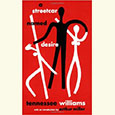Always an Unexpected Grace Note
Excerpt: People Only Die of Love in Movies: Film Writing by Jim Ridley
In 1999, a decade after he began writing for the Nashville Scene, Jim Ridley wrote a sentence in the paper’s January 21 cover story that hung like a cloud over his newfound profession: “One week from today, Nashville’s only art-movie theater will close its doors for good.” The situation was beyond bleak. Unsustainable losses, an effect of miserable attendance, had driven the Belcourt to the brink.
I might as well share the moment that broke my heart: The Belcourt was showing an amazing double bill of Jean-Luc Godard’s Contempt and François Truffaut’s Day for Night — two movies available on TV and video only in the most washed-out, dispiriting condition. I was seeing a movie on the other screen, but I snuck for a moment into Day for Night, which I’d seen earlier. Onscreen was the scene in which Truffaut, playing a movie director, dreams that he is a child again, swiping stills of Citizen Kane from the lobby of a neighborhood movie theater. Truffaut the director deepened my love of movies; Truffaut the critic made me want to write. I wondered how many other people in the auditorium were sharing this impossibly perfect moment. The room held 400. I counted eight. I bought two more tickets, just to make it 10.
As it turned out, it was not the end for the Belcourt. A community of film lovers, Jim among them, banded together to save the theater, and with it, a vital pillar of the city’s arts scene. Many consider his cover story (“Fade to Black,” included here in Chapter 6) to be the spark that helped the Belcourt survive its darkest hour: “Local audiences don’t receive better because they haven’t been demanding or supporting it,” he wrote. He led the way by doing both.

Jim’s writing reminds aspiring journalists that the printed word can and should be used as a bully pulpit to demand better. During a period when the Belcourt was under corporate ownership, Jim sometimes wove his critiques of the theater’s conditions into his reviews. In a 1997 assessment of Breaking the Waves, Jim decried “a great filmmaker’s work kneecapped by indifferent projection and lousy facilities.” He even included the phone number for Breaking the Waves’ distributor so readers could complain. We don’t often hear about critics in big cities contending with such conditions just to see movies worth writing about. To do the work he loved, in other words, Jim could not focus solely on film reviewing but also on coverage of the venues that mattered to him.
In the end, the Belcourt did more than just survive. In July 2016, just months after Jim left us, it reopened after undergoing a massive six-month, $5 million renovation that modernized the building, restored the facade and, importantly, added a third screen. Also among the many improvements: a seat bearing Jim’s name, eternally reserved in the third row, where he always sat. (There are also seats for his wife, Alicia Adkerson, and his kids, Kat and Jamie.) They also named the lobby after him—a place he had spent countless hours discussing what he’d just seen, with everyone from film students to friends.
But Jim’s work on behalf of the Belcourt is just a tiny piece of his film-writing oeuvre, which included some 600 reviews and reported features. Ninety-four are collected in this volume.
Add to this dilemma the relative smallness of Nashville as a film market in the 1980s and ’90s, and it’s not hard to see why the pool of reviews from which this book was drawn skewed heavily white and male. Even so, it’s remarkable just how inclusive Jim’s writing still manages to be. He strove to amplify marginalized voices when he could, as evidenced by his stories about small and upstart enterprises such as the International Black Film Festival of Nashville, which in its second year Jim observed as showing “signs of becoming a major boon to the city and its perpetually struggling film industry.” The festival recently completed its eleventh run. As Jim’s career advanced and Nashville’s stature grew, the duties of running the paper limited the number of films he had time to review, but he used this as a way to encourage other writers, myself included, to cover movies that mattered and spoke to them.
On March 28, 2016, Jim collapsed in his office at the Scene. His heart had failed, and he was rushed to the hospital in a coma. A few days later, as doctors eased him off sedatives, his eyes fluttered when Alicia played Elvis Costello songs for him on her computer. So we flooded his Facebook page with songs we knew he loved, or hoped he would love enough to hear again. But Jim never regained consciousness. He died on April 8.
For days after his death, you could search the national trending topics on Twitter and find the name Jim Ridley there alongside the likes of Star Wars (the first Rogue One trailer had arrived) and Bruce Springsteen (one of Jim’s heroes, who had just canceled a North Carolina date to protest the state’s anti-transgender bathroom law). Nashville mayor Megan Barry called him “one of those rare individuals who effortlessly coupled genius and insight with infectious enthusiasm and unbridled generosity of spirit.” In Washington, D.C., Nashville Congressman Jim Cooper entered a statement into the record of the 114th Congress that read, in part, “Jim Ridley made our city better, and it will not be the same without him.”
As Noel Murray, a former Scene colleague, wrote in a tribute to Jim on Roger Ebert’s website:
Critics around the country are mourning Jim because many of them were on the receiving end of phone calls or emails from him during some of the lowest times in their careers. If they’d just lost a gig, he’d ask if they wanted to contribute something to the Scene, and would make it seem like they’d be doing him a favor. Even after he had the responsibility of running the entire paper, Jim still edited the film section, and managed a stable of contributors that at times has included some of the best-known critics in the country: Bilge Ebiri, Mike D’Angelo, David Fear and Joshua Rothkopf. He paid attention to what his friends and colleagues loved, and tried to match them to reviews where they could shine.
Even as he worked to buoy the careers of others, Jim turned down numerous opportunities over the years to write for bigger audiences. He chose to remain committed to Nashville and to the Scene.
In his final blog post, Jim, in just a few words, vividly evokes the jittery feel of the comic-drama The Mend: “[John] Magary, making his feature debut, uses a jarring cutting style that keeps you edgy and off-balance, as if someone were tossing lit firecrackers with fuses of varied lengths.” That’s an image that stays with you. Here’s another: “Like Burt Reynolds, his face got thicker and heavier, with a drugged lion’s eyes,” Jim writes, describing Eddie Murphy post–Beverly Hills Cop, “while he flashed his dimming smile like someone plugging in a beer sign.” Watching Wong Kar-wai’s Fallen Angels is “like looking at the world from the inside of a jukebox,” a perfect summation of the movie’s whirling pop delirium.
That is to say, Jim was able to pull seemingly disparate elements into the same review and make them sing—sometimes in unison, sometimes in harmony, sometimes in counterpoint. The farther apart in time and sphere of knowledge the references, the more delight the recombinant sentences yield. (A word of caution to budding critics: It doesn’t matter how colorful or out-of-the-blue a comparison is if it doesn’t illuminate something about the subject.) In a review of Stranger Than Fiction, Jim observes Will Ferrell’s “Bullwinkle frame” and “those boyish, faintly blobby features that suggest an ice-cream sculpture of James Caan in hot August sun.” Jim likens a sequence in Superman Returns, in which Superman uses his X-ray vision to follow Lois’ elevator up the Daily Planet skyscraper, to the silent movies of Louis Feuillade—finding an unexpected grace note in a summer tentpole crowd-pleaser. Jim’s analysis of The Matrix Reloaded uses imagery you might associate with the film anyway, but in a vividly new way: He likens the way it alternates jarringly between furious action scenes and not-at-all-furious talking scenes to “passing from one Philosophy 101 lecture to another through a campus full of somersaulting ninjas.” And so on. It speaks to Jim’s prolific phrase-turning that these examples are all taken from reviews that, for reasons of space or thematic cohesion, didn’t even make it into this volume.

Steve Haruch’s writing has appeared at NPR’s Code Switch, The New York Times, and the Nashville Scene. He is the editor of People Only Die of Love in Movies: Film Writing by Jim Ridley, coming in June 2018 from Vanderbilt University Press.


